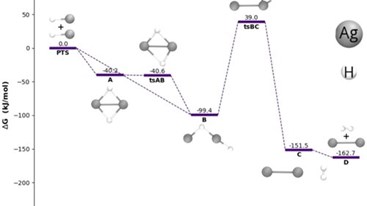Wednesday, 17/12/2025 | 06:34 GMT+7
A recent study, conducted by the Rochester Institute of Technology, reveals that the total energy needed to make organic solar cells is less than the one needed to make inorganic solar cells.
“This analysis provides a comprehensive assessment of how much energy it takes to manufacture an organic solar cell, which has a significant impact on both the cost and environmental impact of the technology,” says Brian Landi, assistant professor of chemical engineering at RIT and a faculty advisor on the project.

“Organic solar cells are flexible and lightweight, and they have the promise of low-cost solution processing, which can have advantages for manufacturing over previous-generation technologies that primarily use inorganic semiconductor materials,” adds Annick Anctil, lead researcher on the study and a fourth-year doctoral candidate in RIT’s doctoral program in sustainability. “However, previous assessments of the energy and environmental impact of the technology have been incomplete and a broader analysis is needed to better evaluate the overall effect of production and use.”
The study takes into account the total energy used and the impact that material collection, fabrication, mass production and use of organic solar cells have on the environment. Previous similar studies lacked a component-by-component breakdown of the individual materials of which organic solar cells are made of, nor did they calculate the total energy payback during the cell’s lifetime.
In this case, they discovered that also the payback time for organic solar cells is lower, compared to inorganic, silicon ones, because the technology itself is cheaper.
greenoptimistic.com








 Enhancing capacity to develop and implement energy efficiency policies at local level
Enhancing capacity to develop and implement energy efficiency policies at local level
 Bosch Vietnam Plant Benefits from Investment in Energy Efficiency
Bosch Vietnam Plant Benefits from Investment in Energy Efficiency
 Webinar 2: “Financial Support for Energy Efficiency Enterprises – Opportunities and Challenges”
Webinar 2: “Financial Support for Energy Efficiency Enterprises – Opportunities and Challenges”
 Vietnamese enterprises achieve green growth and cut costs through energy efficiency
Vietnamese enterprises achieve green growth and cut costs through energy efficiency
 Capacity Building for Program Implementing Entity
Capacity Building for Program Implementing Entity
 Promoting Energy Efficiency for Technical Staff of Brick and Ceramic Sector
Promoting Energy Efficiency for Technical Staff of Brick and Ceramic Sector
 Enhance Energy Efficiency Knowledge for Managers of Cement Industrial Enterprises
Enhance Energy Efficiency Knowledge for Managers of Cement Industrial Enterprises